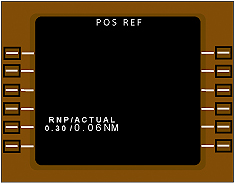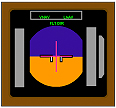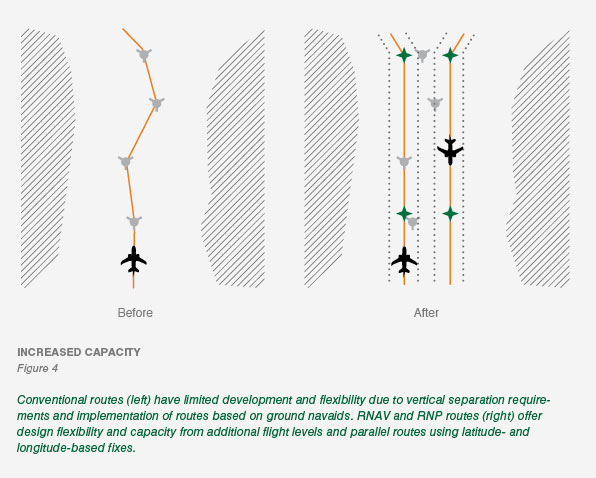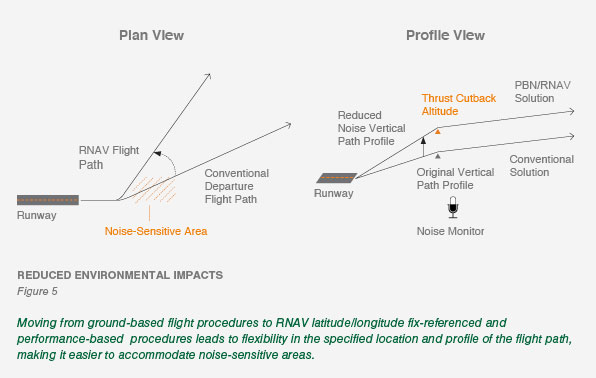
BENEFITS OF PBN
Aviation authorities anticipate a number of benefits when PBN becomes widely implemented. These benefits include:
- Safety: Lateral and vertical track-keeping is much more accurate and reliable due to new three-dimensional guided arrival, approach, and departure procedures that cannot be defined by conventional navaids. No accidents have been reported to date associated with the use of RNP/RNAV procedures. In contrast, for all controlled-flight-into-terrain accidents, 60 percent occur on non-precision approaches using conventional navaids. PBN also reduces the flight crew’s exposure to operational errors (see fig. 3).
- Capacity: Delays, congestion, and choke points at airports and in crowded airspace may be reduced because of new and parallel offset routes through terminal airspace, additional ingress/egress points around busy terminal areas, more closely spaced procedures for better use of airspace, and reduced or eliminated conflict in adjacent airport flows (see fig. 4).
- Efficiency: Enhanced reliability, repeatability, and predictability of operations lead to increased air traffic throughput and smoother traffic flow.
- Access: Obstacle clearance and environmental constraints can be better accommodated by applying optimized PBN tracks.
INCREASED OPERATIONAL SAFETY
Figure 3
   
|
PBN promises economic benefits as well. For example, Hartsfield-Jackson Atlanta International Airport has streamlined operations by implementing 16 RNAV departures and three RNAV arrivals. The resulting earlier climb to enroute altitudes reduces fuel burn, and the reduced track distances enable fuel savings. For 2007, Hartsfield-Jackson Atlanta International Airport authorities are estimating $34 million in annual fuel savings for airlines as a result of RNAV. The airport is also reporting an additional 10 departures per hour. At Dallas-Fort Worth International Airport, RNAV departures are allowing between 11 and 20 additional operations per hour.
PBN also offers environmental benefits by saving fuel, reducing C02 emissions, and eliminating high-thrust go-arounds. Flying down the middle of a defined flight path means less throttle activity and better avoidance of noise-sensitive areas, so people on the ground perceive less jet noise and are exposed to fewer engine emissions (see fig. 5).

|

|

